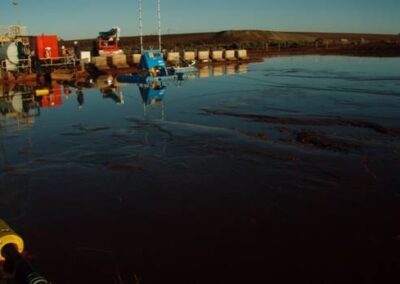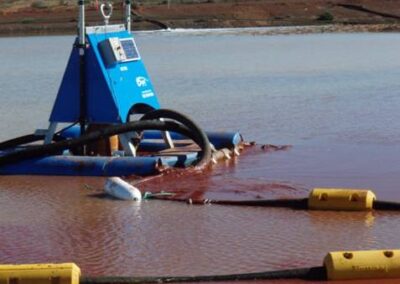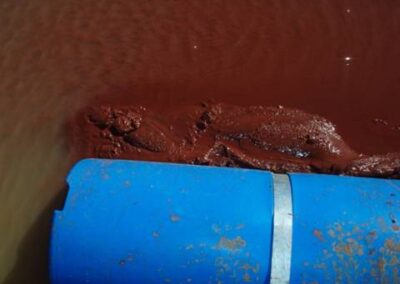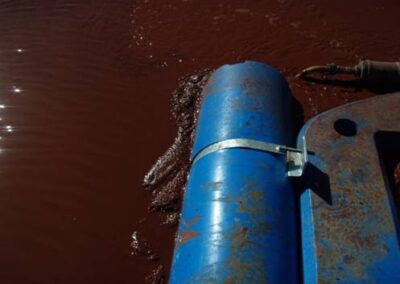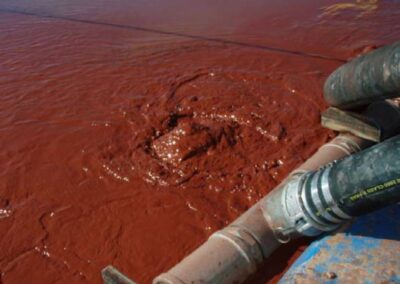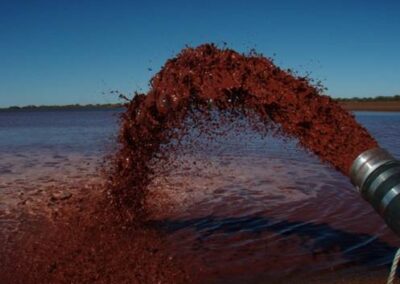Nickel / Cobalt Process Pond
- Industry: Refineries
- Location: Queensland, Australia
Project Brief
The pond sediment was only 100mm below the water surface. The walls of the pond were bundled with sand bags to raise the water level above the sediment by a further 200-300mm.
A special high pressure jetting bar was mounted to the front of our dredge to break the sediment and cut a trench to begin the dredging process.
One of our standard units was delayed by several days due to the pond being allowed to overflow with sediment, however once the dredging trench was cut the sediment slumped to allow clean out to occur and important clean water recovery was achieved for the mine.
Dragging the dredge through pond sediments at the surface 2
Dragging the dredge through pond sediments on the surface
Dragging the dredge through pond sediments at the surface 1
Dragging the dredge through pond sediments on the surface
Dredge Surface Agitators liquifying the shallow sediment
Dredge Surface Agitators “liquifying” the shallow sediment
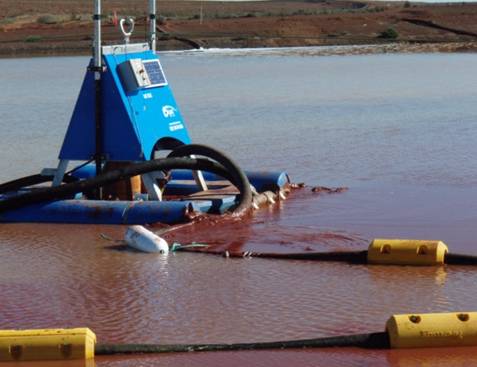
Project Specifics
- An approximate 75% of fines volume was anticipated
- Slurry fines were not compacted or self-adhered (always covered by water)
- Approximate distance to the discharge point (sump) was 120 metres.
- Pond water level was able to be raised and lowered as required for both movement of the dredge, agitation water and reaching the true bottom of the pond (i.e. 4 metres). This was critical to the successful use of this style of dredge, particularly during the early phase of dredging which allows the suction head system to work above the nickel fines.
- Pond water in general was able to be raised and lowered as required during the job so as to not hold up the works.
- Slurry fines % content varied across the pond area.
- Pond size was 8 metres deep, 100 metres long and 70 metres wide at 75% full for a total of 46,000 m3.
- Slurry SG = 1.2
- Water pH = 8.0
- Slurry fines not dry (due to water coverage)

